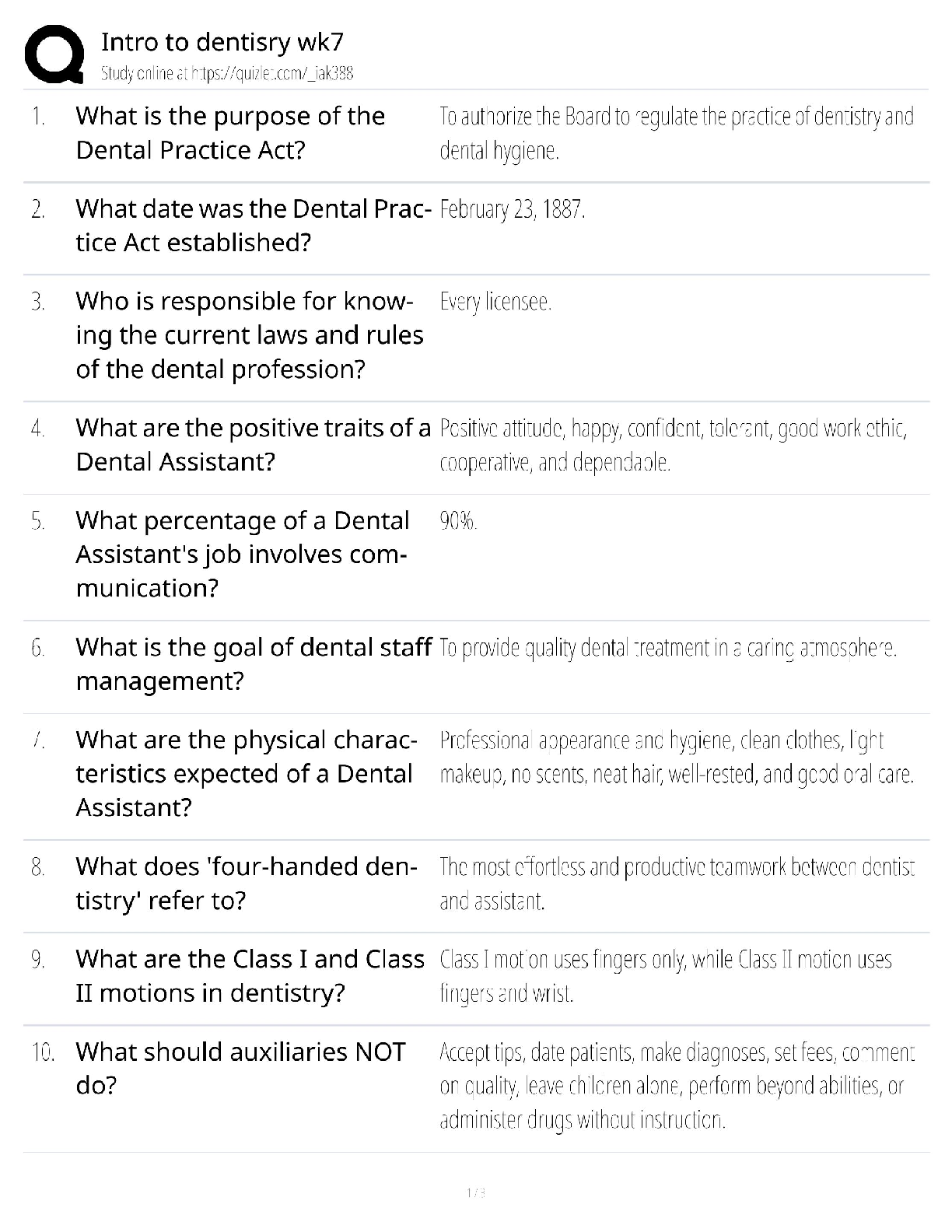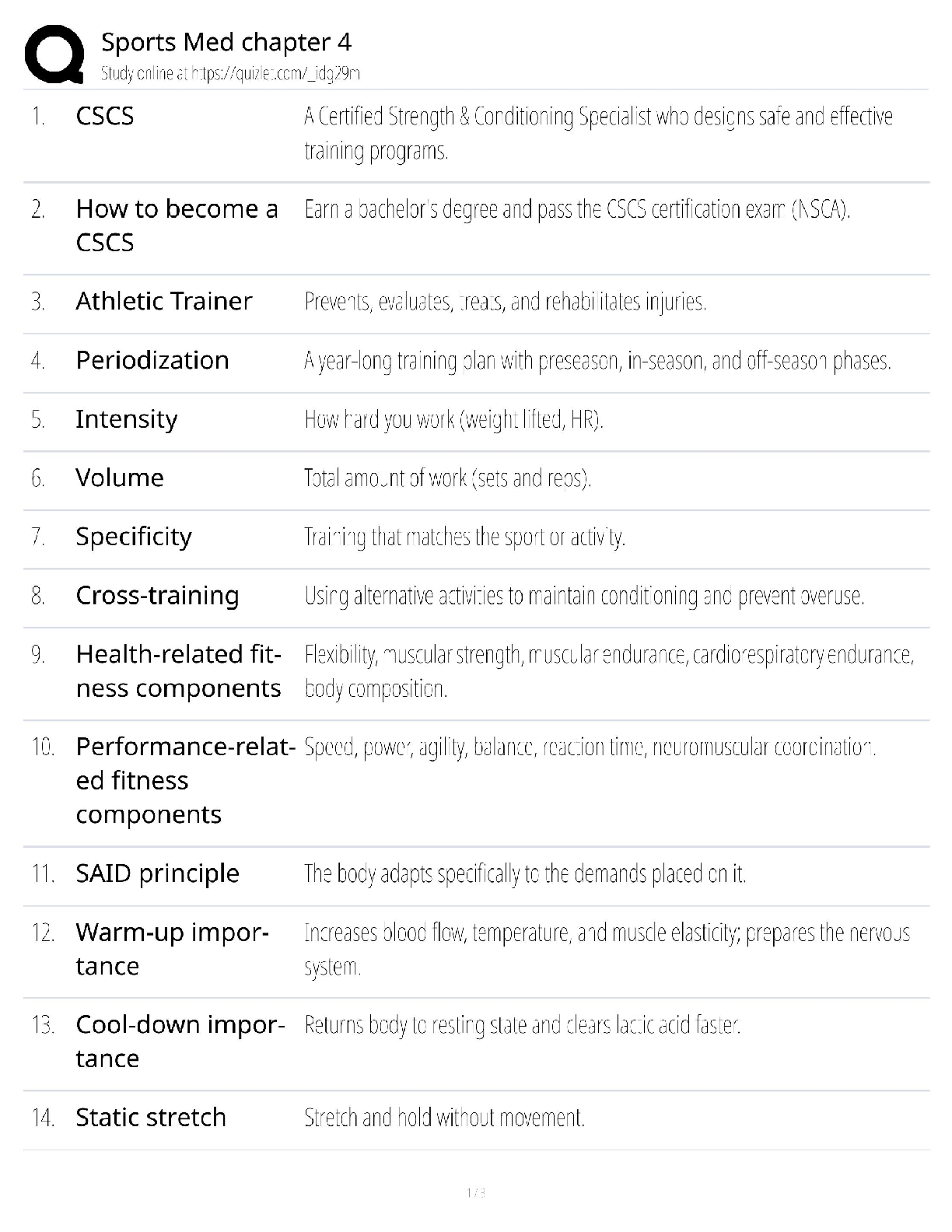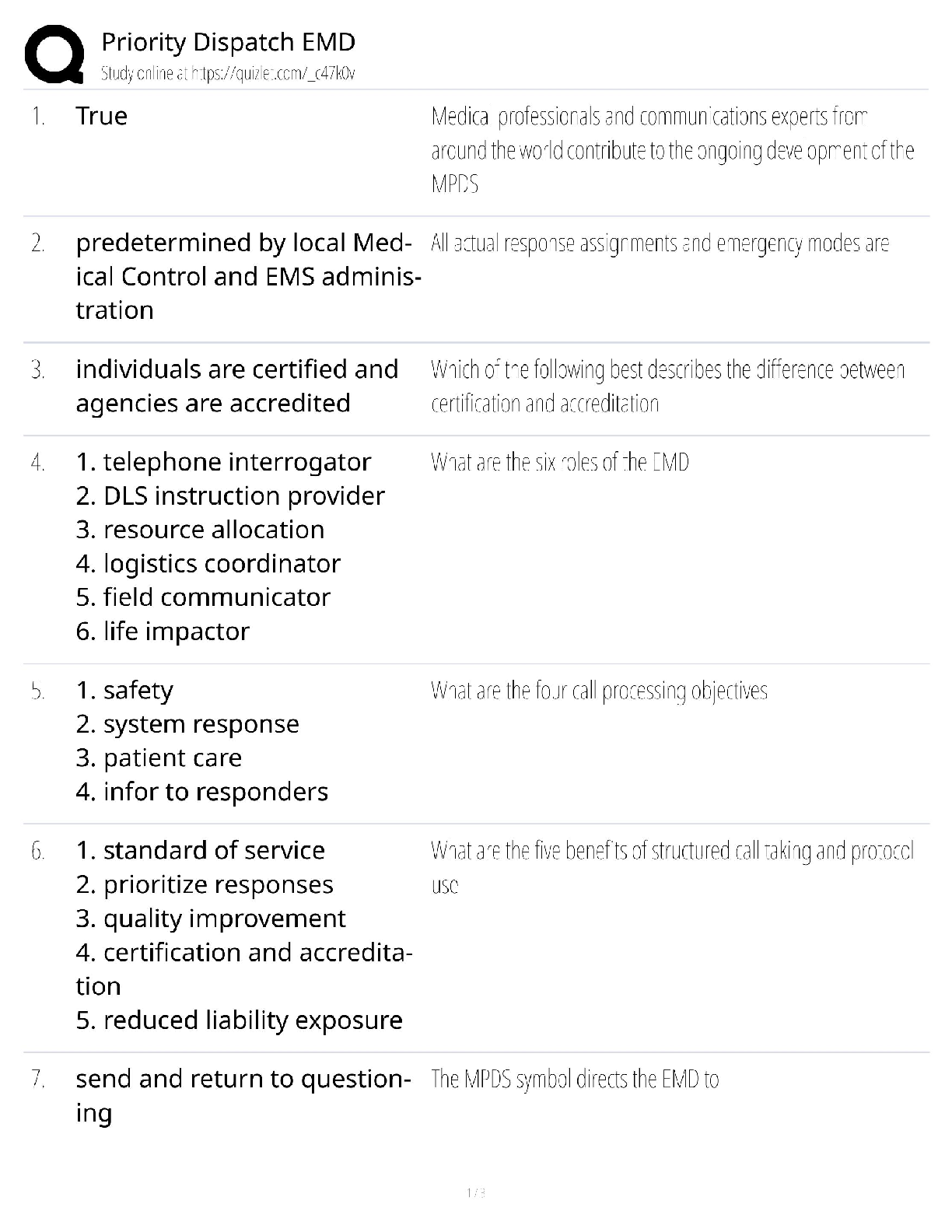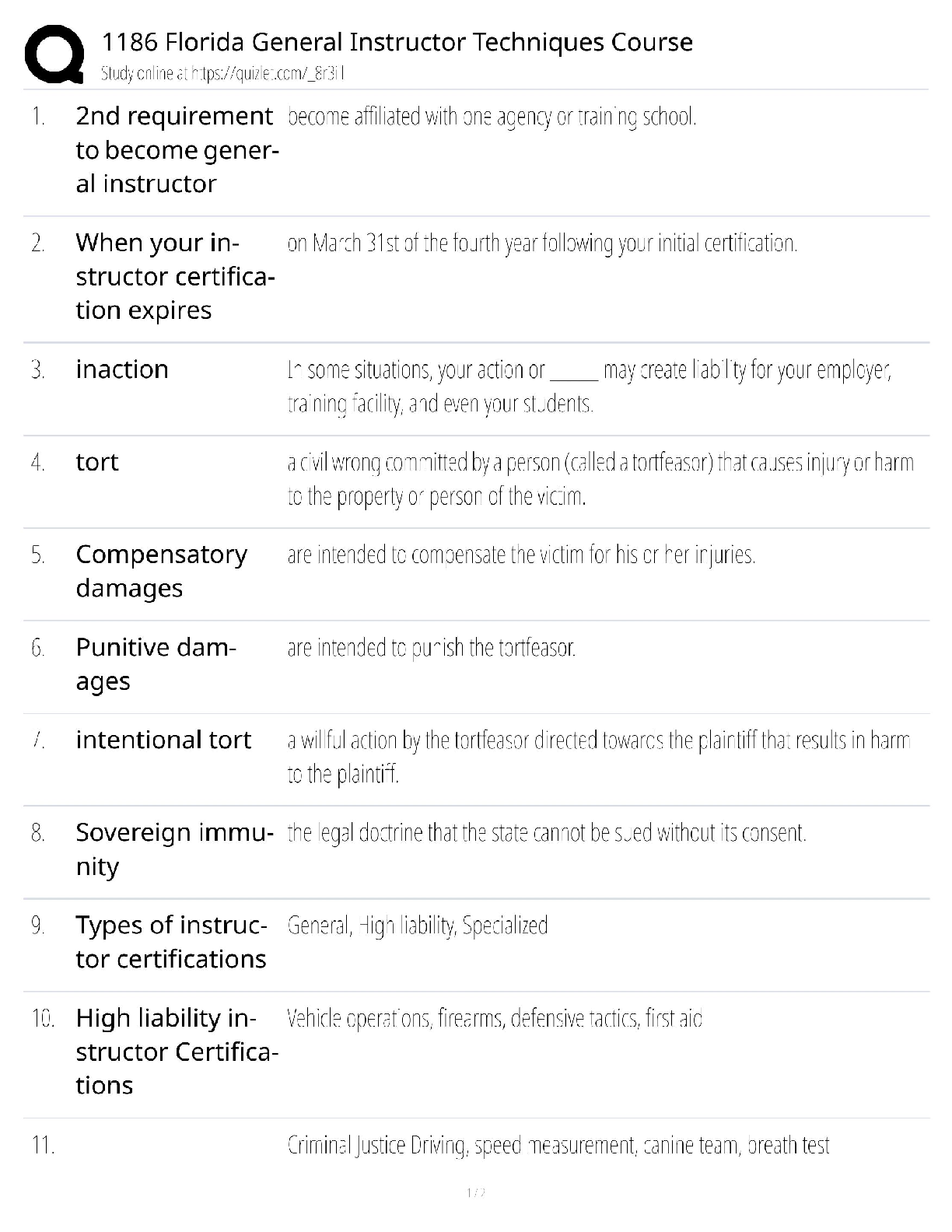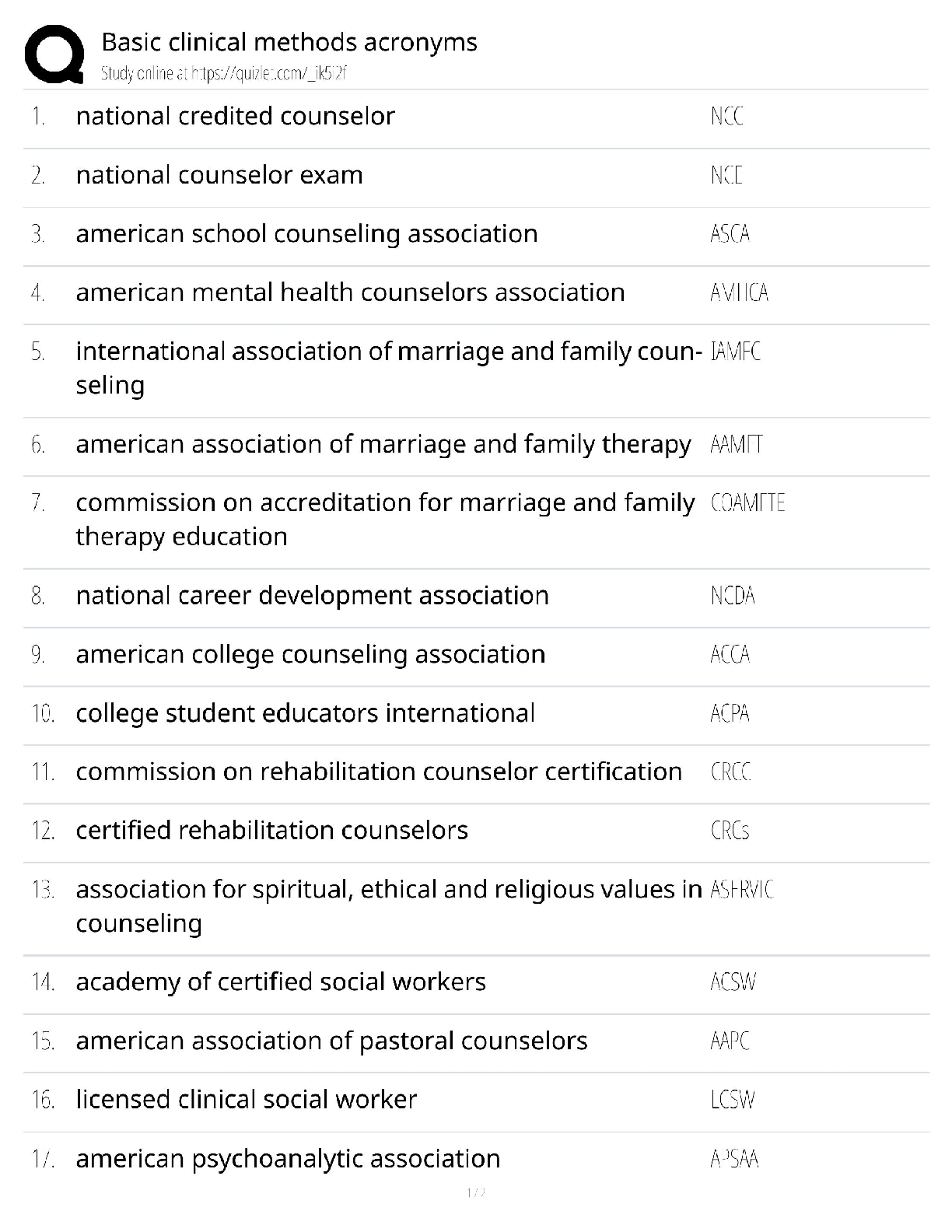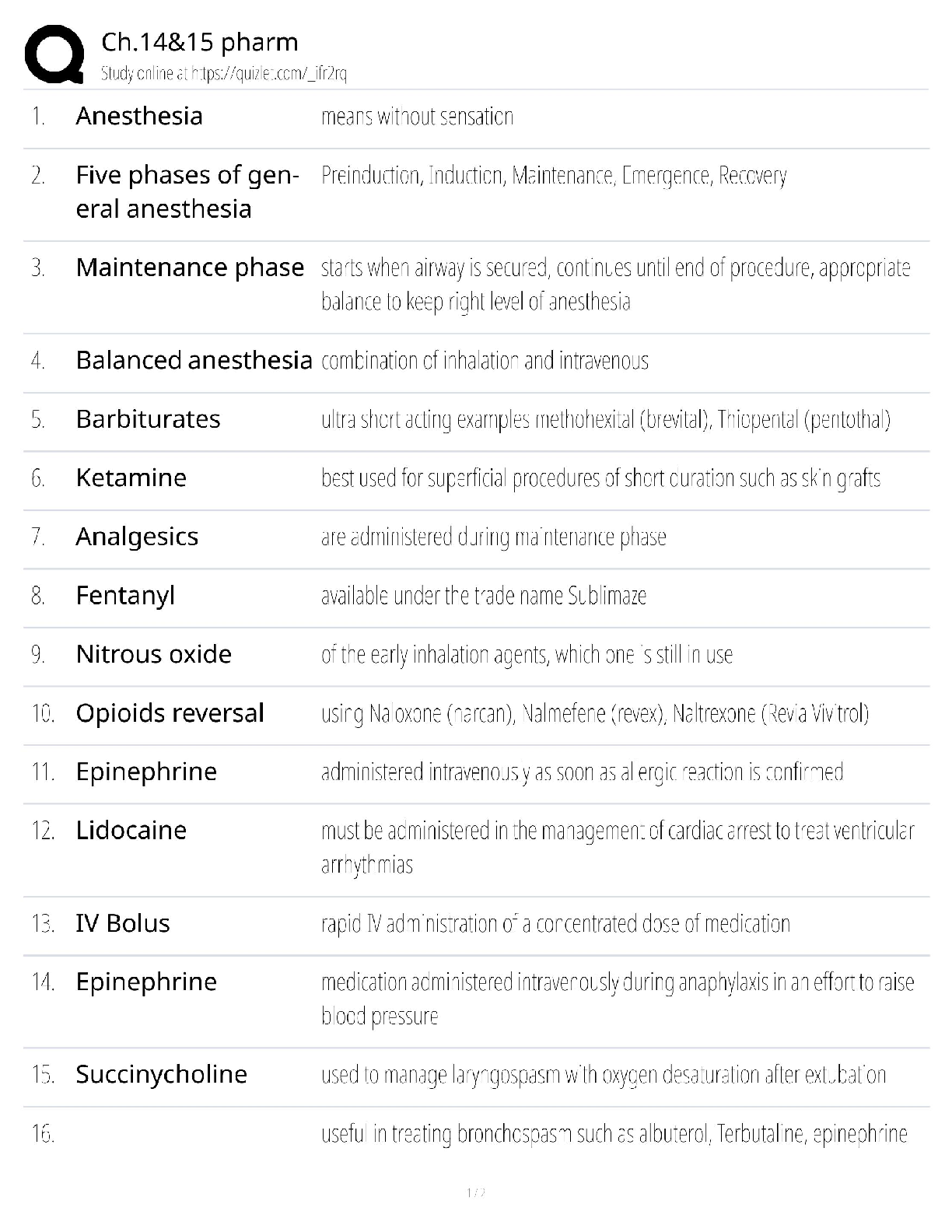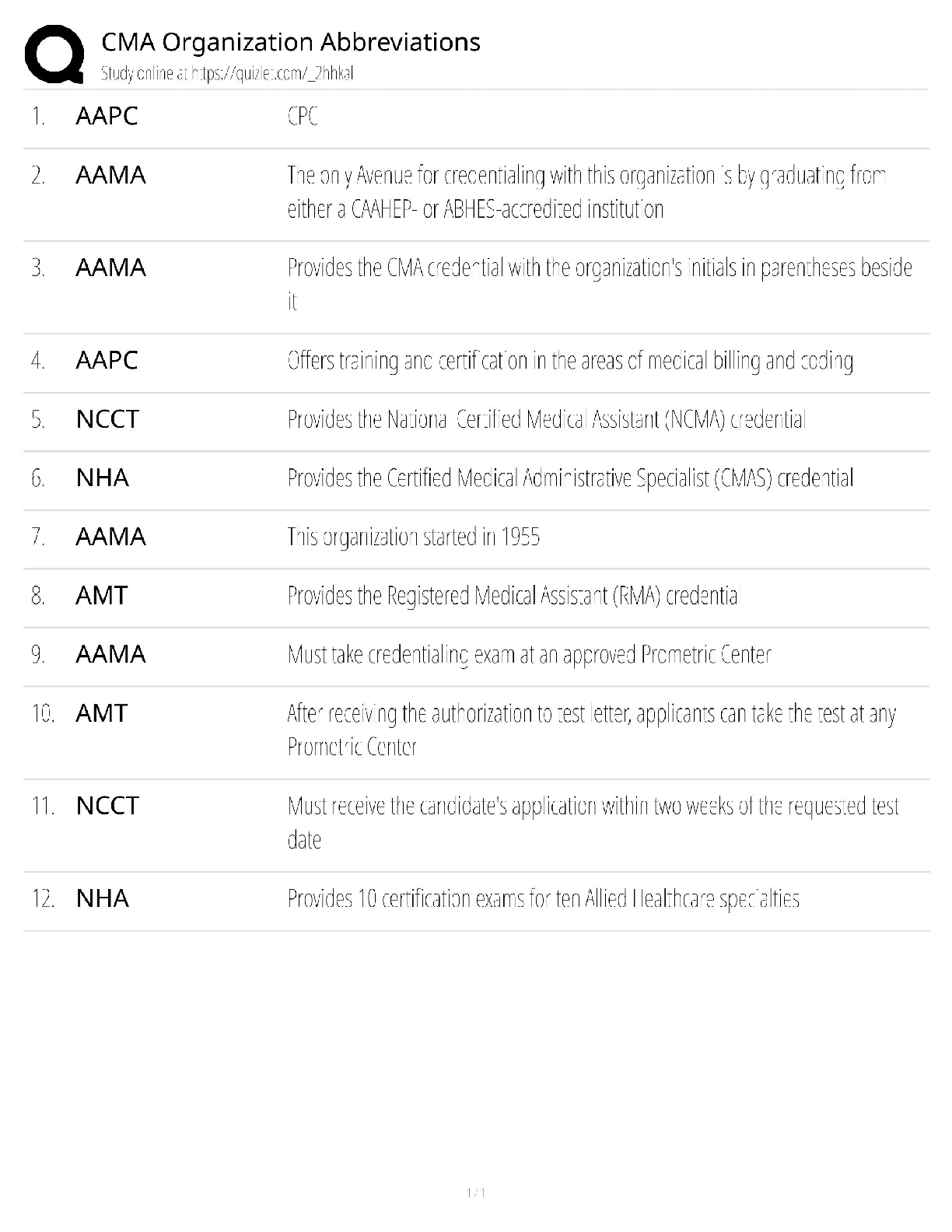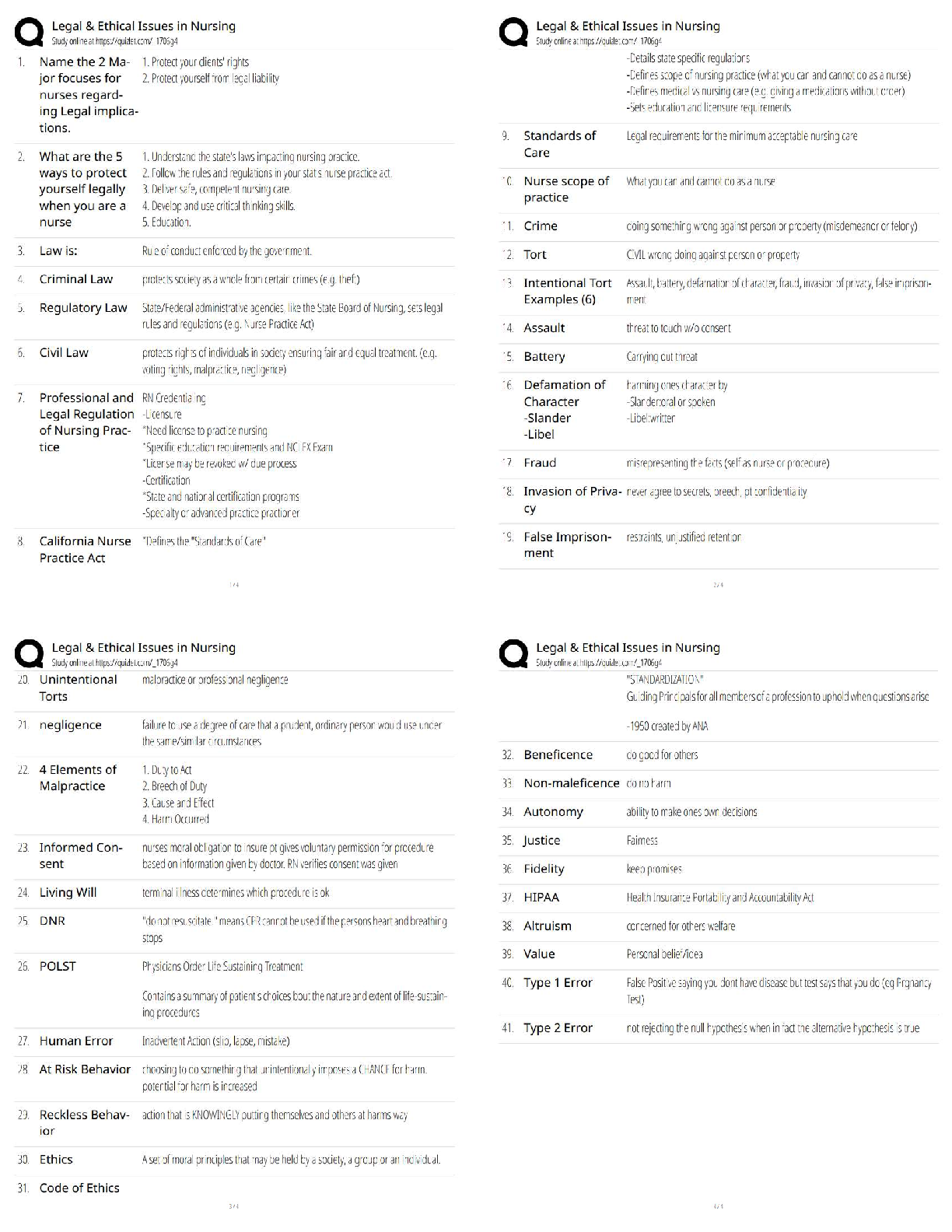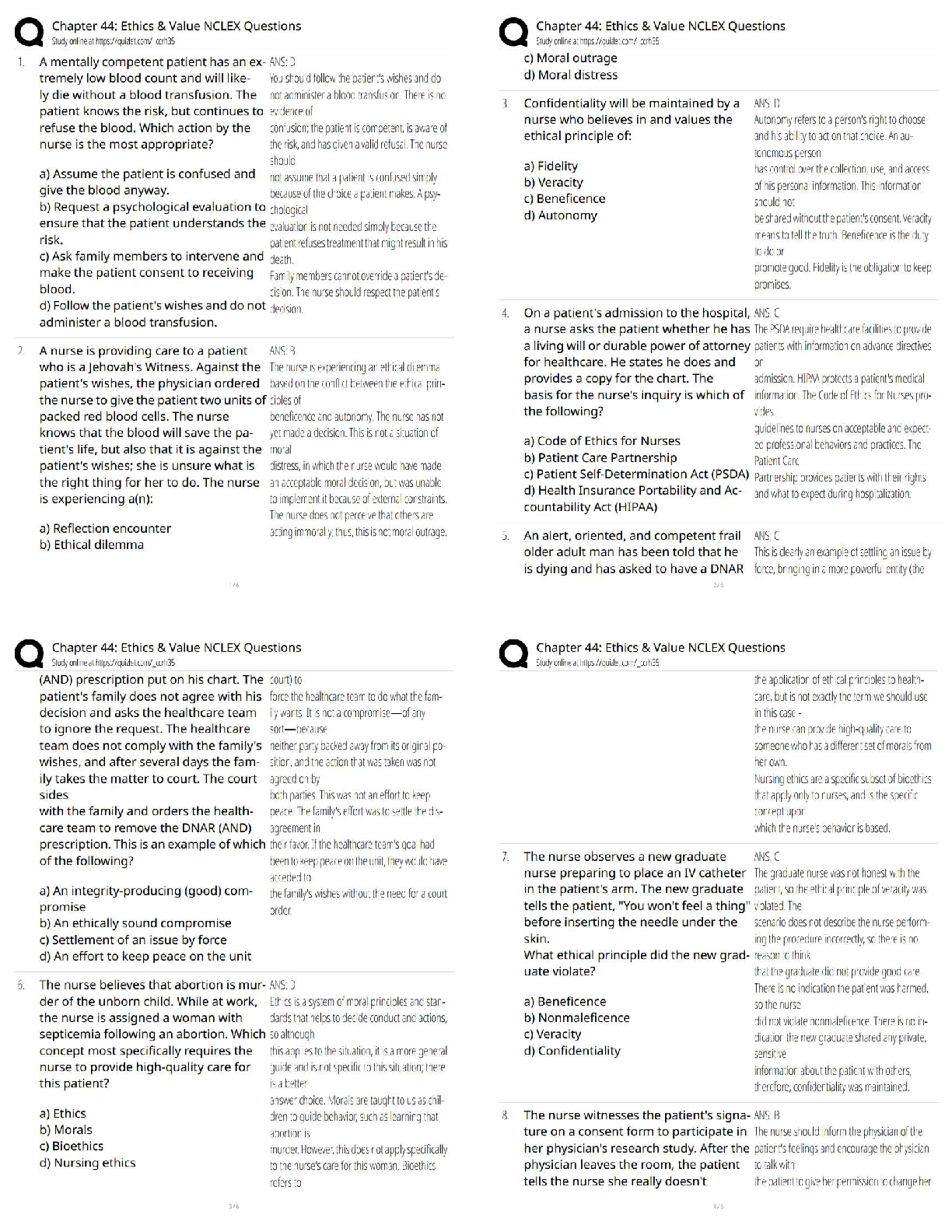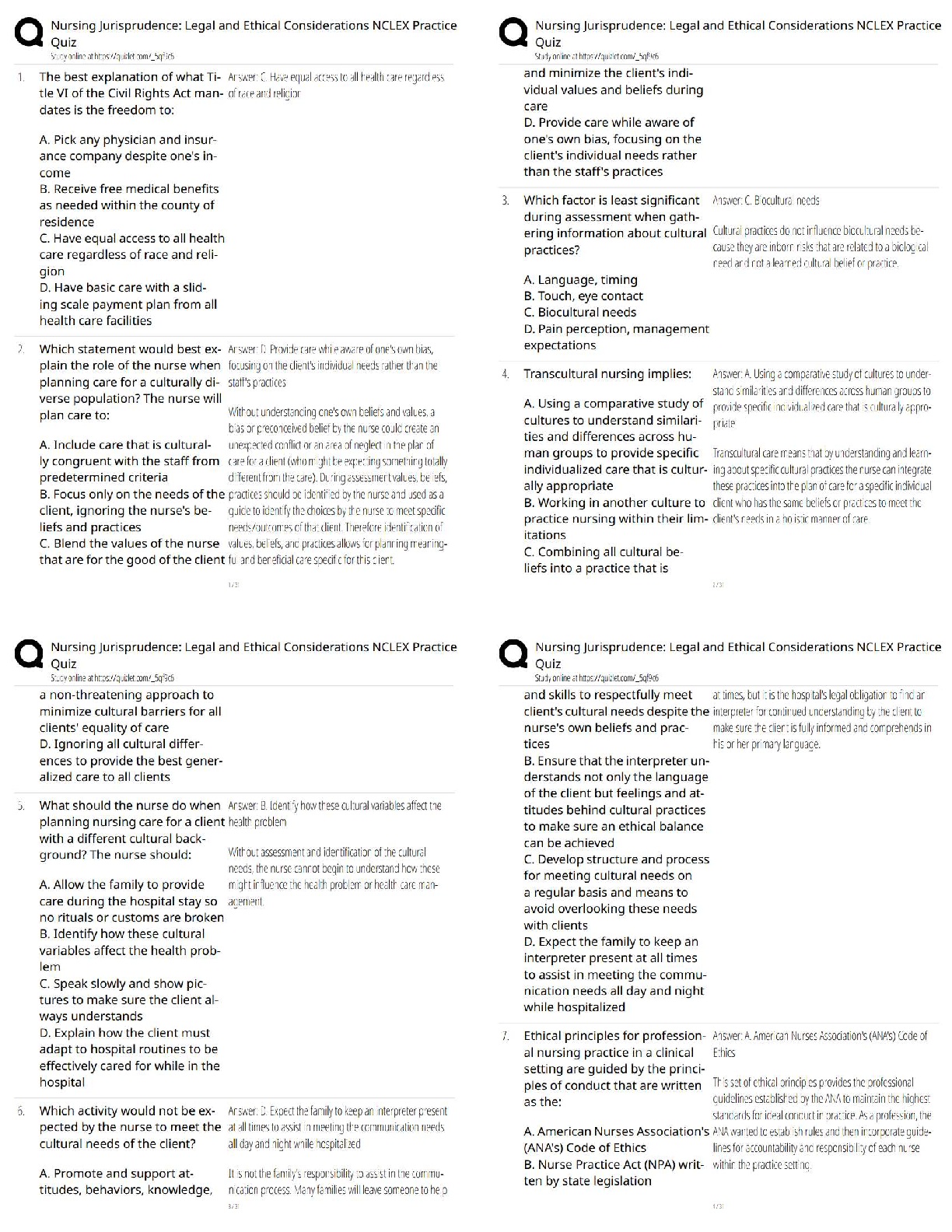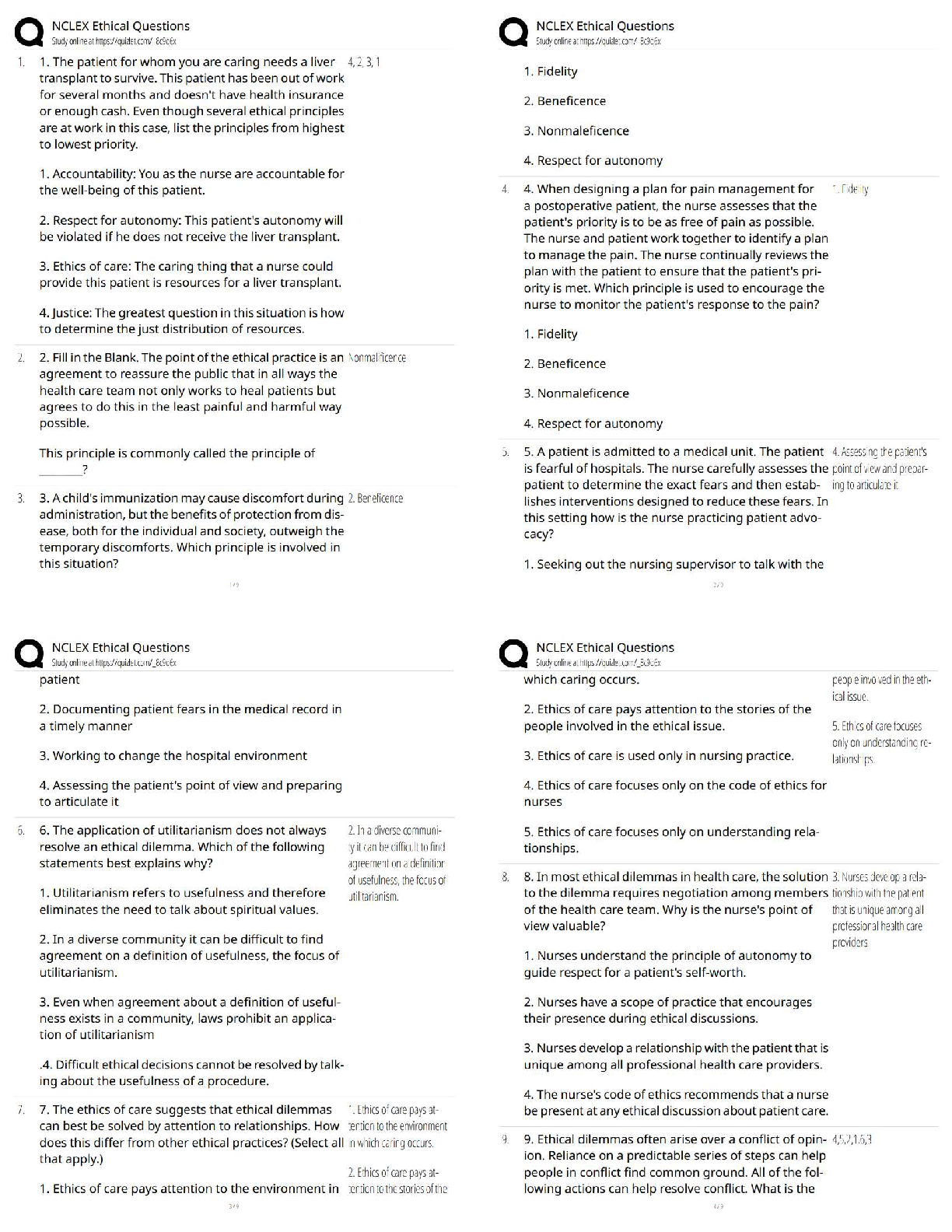*NURSING > QUESTIONS & ANSWERS > HEALTHCARE BSC2347 Review Test Submission: Module 01 Case Study. All Answers Correct (All)
HEALTHCARE BSC2347 Review Test Submission: Module 01 Case Study. All Answers Correct
Document Content and Description Below
HEALTHCARE BSC2347 Review Test Submission: Module 01 Case Study. All Answers Correct 1 out of 1 points Jasper is a 7-year-old boy who has had flu-like symptoms for several weeks. It was mild a ... t first, but his parents notice that he has been getting worse. They took him to his pediatrician last week, but he was sent home with suggestions to use OTC medication to treat his symptoms while his body recovered from what appeared to be a mild infection. Jasper appears weak, has lost 3-4 pounds in the last month, and has been complaining of headaches. Jasper’s parents have now brought him back to the clinic and another physician orders a CBC. What is a CBC? In your own words, briefly describe why it is useful. Selected Answer: CBC is a complete blood count test. A CBC can give us important data, such as white blood Correct Answer: [None] • Question 2 1 out of 1 points The physician suspects that Jasper may have leukemia. Which of the lab results most likely lead the physician to this conclusion? Abnormal WBC count Normal RBC count High hemoglobin level High platelet count • Question 3 1 out of 1 points Jasper exhibits many symptoms that could relate to a diagnosis of leukemia. List and briefly explain 2 other symptoms of leukemia that are NOT mentioned in this case study. • Question 4 1 out of 1 points Because of Jasper’s age, which type of leukemia is the most likely? Answers: Acute lymphocytic leukemia Chronic lymphocytic leukemia Chronic myelogenous leukemia Hairy cell leukemia • Question 5 1 out of 1 points If Jasper has ALL, which of the following lab results is most likely? Answers: High neutrophil count Low neutrophil count Low eosinophil count High platelet count • Question 6 1 out of 1 points What is the most common type of childhood leukemia? In your own words, briefly describe the pathophysiology of the disease. • Question 7 1 out of 1 points Which of these tests would NOT be helpful in diagnosing leukemia? Answers: Peripheral blood smear CT scan Bone marrow biopsy Bone density scan • Question 8 1 out of 1 points In your own words, briefly describe the difference between myelogenous and lymphocytic leukemia. • Question 9 0 out of 1 points Which of the following is NOT a treatment option for ALL? Answers: Chemotherapy Surgery Bone marrow/stem cell transplants Radiation therapy • Question 10 1 out of 1 points Assuming that Jasper has the most common type of childhood leukemia, what is his prognosis? • Question 11 1 out of 1 points Elsa is an 11-month-old girl. Her parents have brought her to her pediatrician because they have noticed she seems lethargic and pale. Both parents have noticed that she appears bloated, doesn’t want to eat as much as she has before, and is tired and “cranky all the time.” They suspected she might be suffering from anemia, since she was being fed a low-iron formula, so they had switched to a high-iron formula. The change made no difference in her symptoms. The pediatrician notes that Elsa’s belly appears swollen. Her vital signs show that her temperature is normal and her heart rate is on the low end of the normal range for her age. She has dropped from the 50th percentile in height and weight (at her last check-up) to the 10th percentile in both height and weight. Blood test results: Hemoglobin: 5 g/dl RBC: 4.6x106 cells/ml MCV: 65 WBC 15,000 cells/ml Platelet count: 250,000 Which of Elsa’s symptoms is NOT typical of anemia in infants? Selected Answer: Slow heart rate Answers: Paleness Tiredness Slow heart rate Loss of appetite • Question 12 1 out of 1 points In your own words, briefly describe why Elsa’s parents changed her formula to the high-iron baby formula. • Question 13 1 out of 1 points Which of her blood test results is within normal range? Selected Answer: Red blood cell count Answers: Hemoglobin Red blood cell count Mean corpuscular volume White blood cell count • Question 14 1 out of 1 points Elsa’s blood sampled was analyzed under a microscope and it was determined that her red blood cells were “hypochromatic” and “microcytic.” Explain, in your own words, what these terms mean. • Question 15 1 out of 1 points Elsa’s pediatrician suspects that she has thalassemia. Which of the following statements is true of thalassemia? Selected Answer: Thalassemia is also known as erythroblastic anemia and involves a reduced amount of hemoglobin in the blood. Answers: Thrombocytes tend to “stick together” and form blood clots. Thalassemia is always caused by diet and environmental factors, not genetic makeup. Thalassemia is also known as erythroblastic anemia and involves a reduced amount of hemoglobin in the blood. Thalassemia is a type of hemophilia and is often hereditary in females. • Question 16 1 out of 1 points In your own words, explain why hemoglobin is important in hematology. • Question 17 1 out of 1 points It is determined that Elsa is experiencing beta-thalassemia major. Which of the following statements is NOT true regarding this diagnosis? Answers: The cause of beta-thalassemia is genetic. Beta-thalassemia major is a grave condition and has a high mortality rate. Beta-thalassemia major is often treated with blood transfusions. Because beta-thalassemia is an x-linked trait, it affects males more often than females. • Question 18 1 out of 1 points Because Elsa has received a confirmed diagnosis of beta-thalassemia major, which of the following statements is true about her parents? Answers: Only her mother carried the gene that caused her blood disorder. Only her father carried the gene that caused her blood disorder. If her parents have another child naturally, there is a 100% chance that the second child will be diagnosed with beta-thalassemia major. If her parents have another child naturally, there is a 25% chance that the second child will be diagnosed with beta-thalassemia major. • Question 19 1 out of 1 points As Elsa gets older, which of the following choices is NOT a likely complication of her disorder? Answers: Splenomegaly Gallstones Cirrhosis Decreased gastrointestinal iron absorption • Question 20 1 out of 1 points In your own words, briefly describe how thalassemia is related to Elsa’s failure to thrive. [Show More]
Last updated: 1 year ago
Preview 1 out of 10 pages
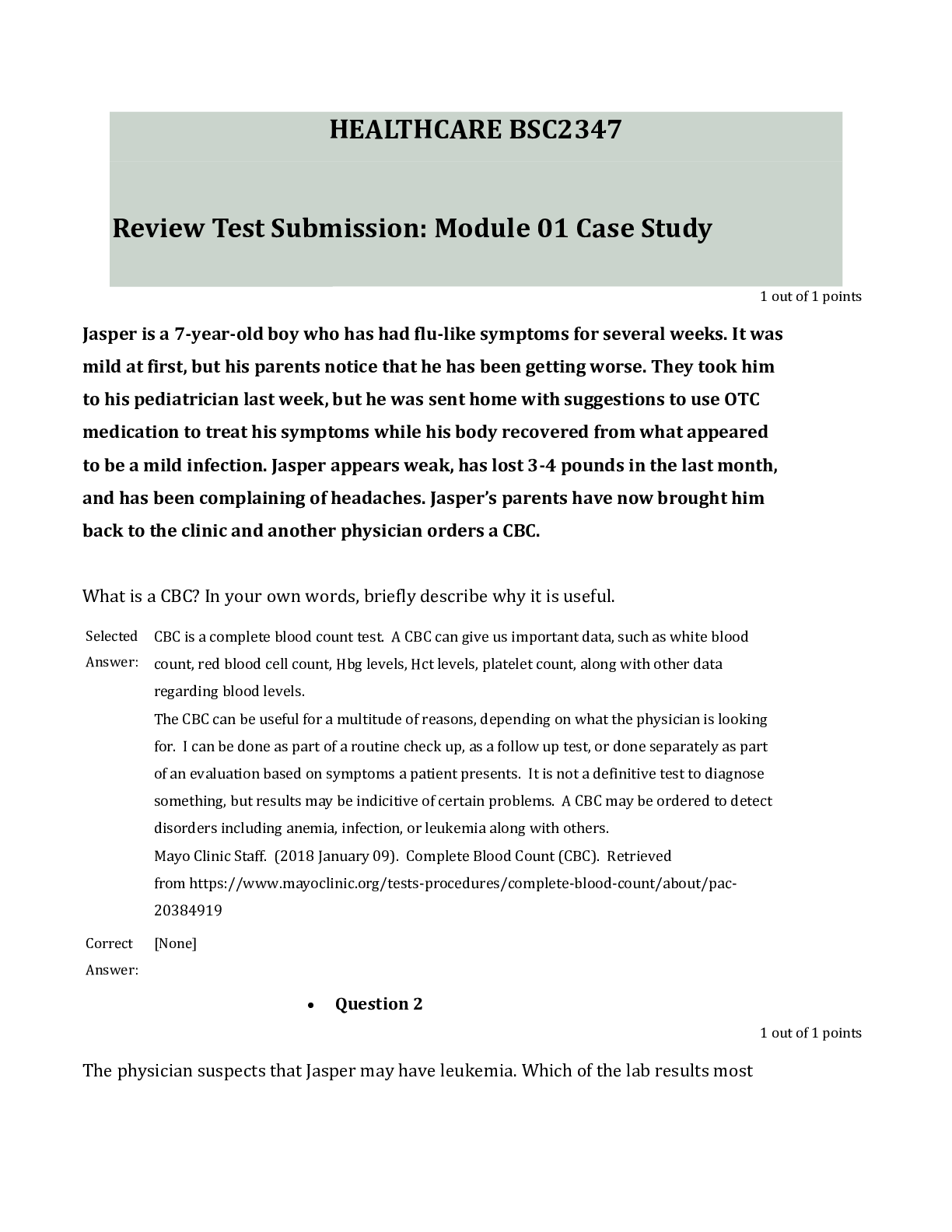
Buy this document to get the full access instantly
Instant Download Access after purchase
Buy NowInstant download
We Accept:

Reviews( 0 )
$6.00
Can't find what you want? Try our AI powered Search
Document information
Connected school, study & course
About the document
Uploaded On
Oct 28, 2019
Number of pages
10
Written in
All
Additional information
This document has been written for:
Uploaded
Oct 28, 2019
Downloads
0
Views
227


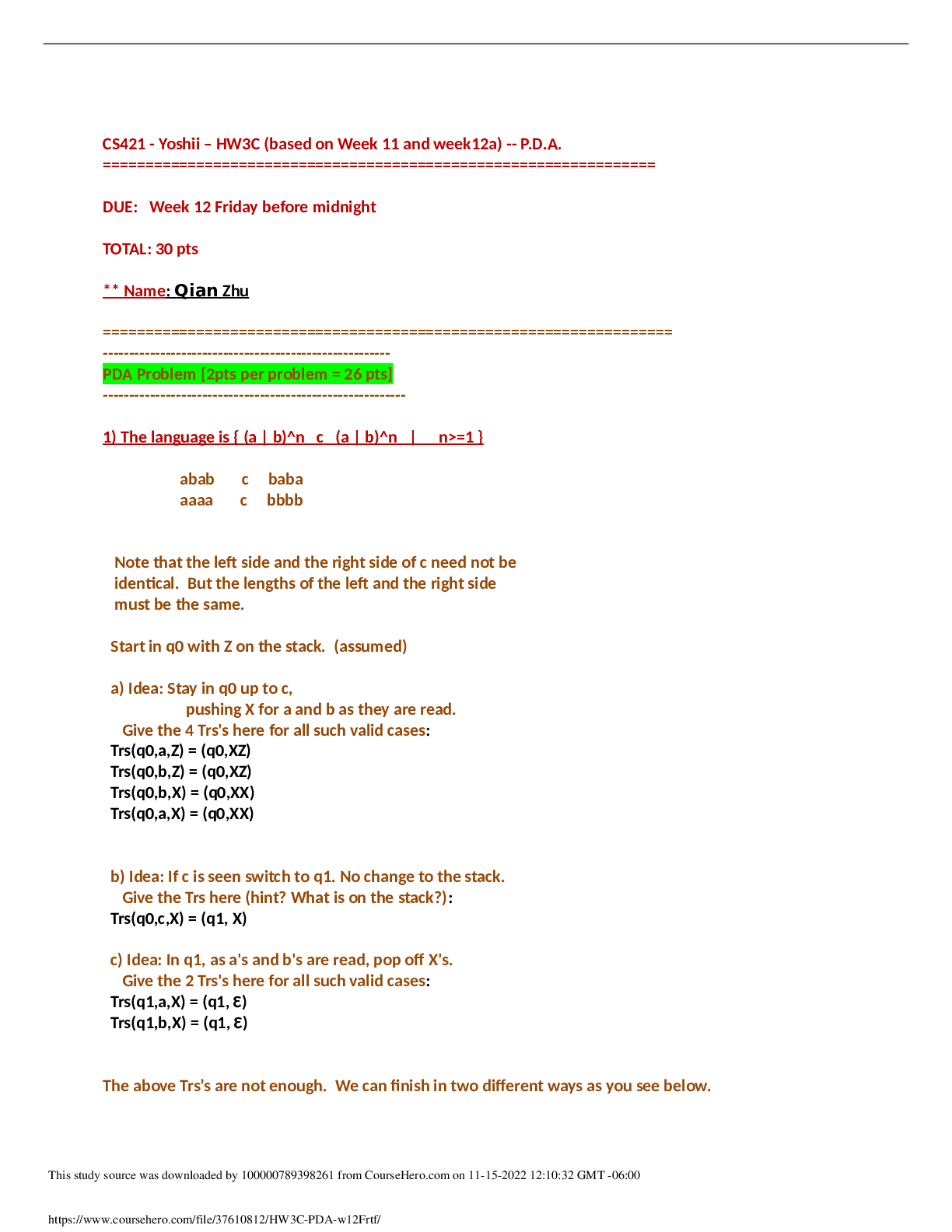


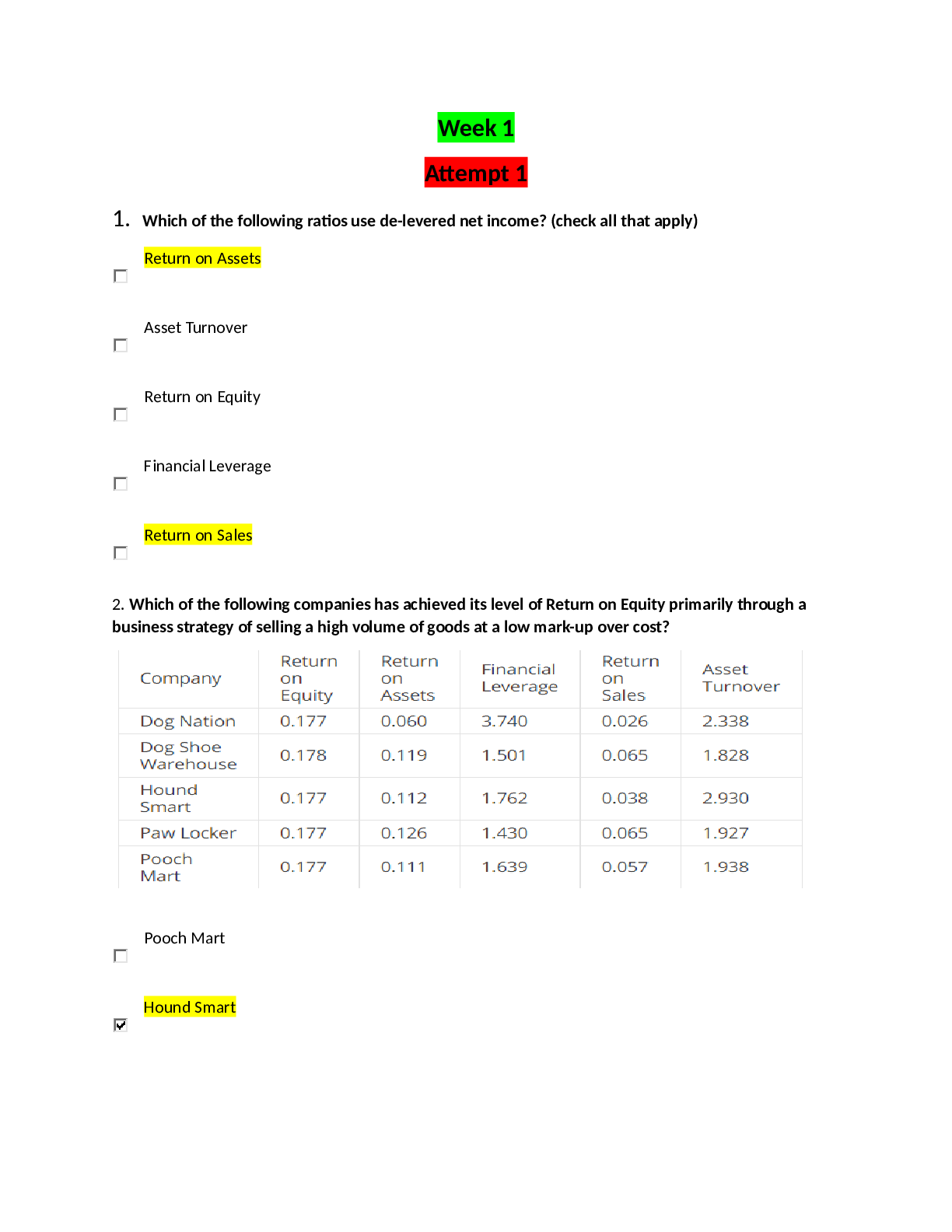
.png)
.png)
.png)
.png)
.png)
.png)
.png)
